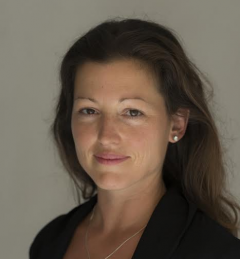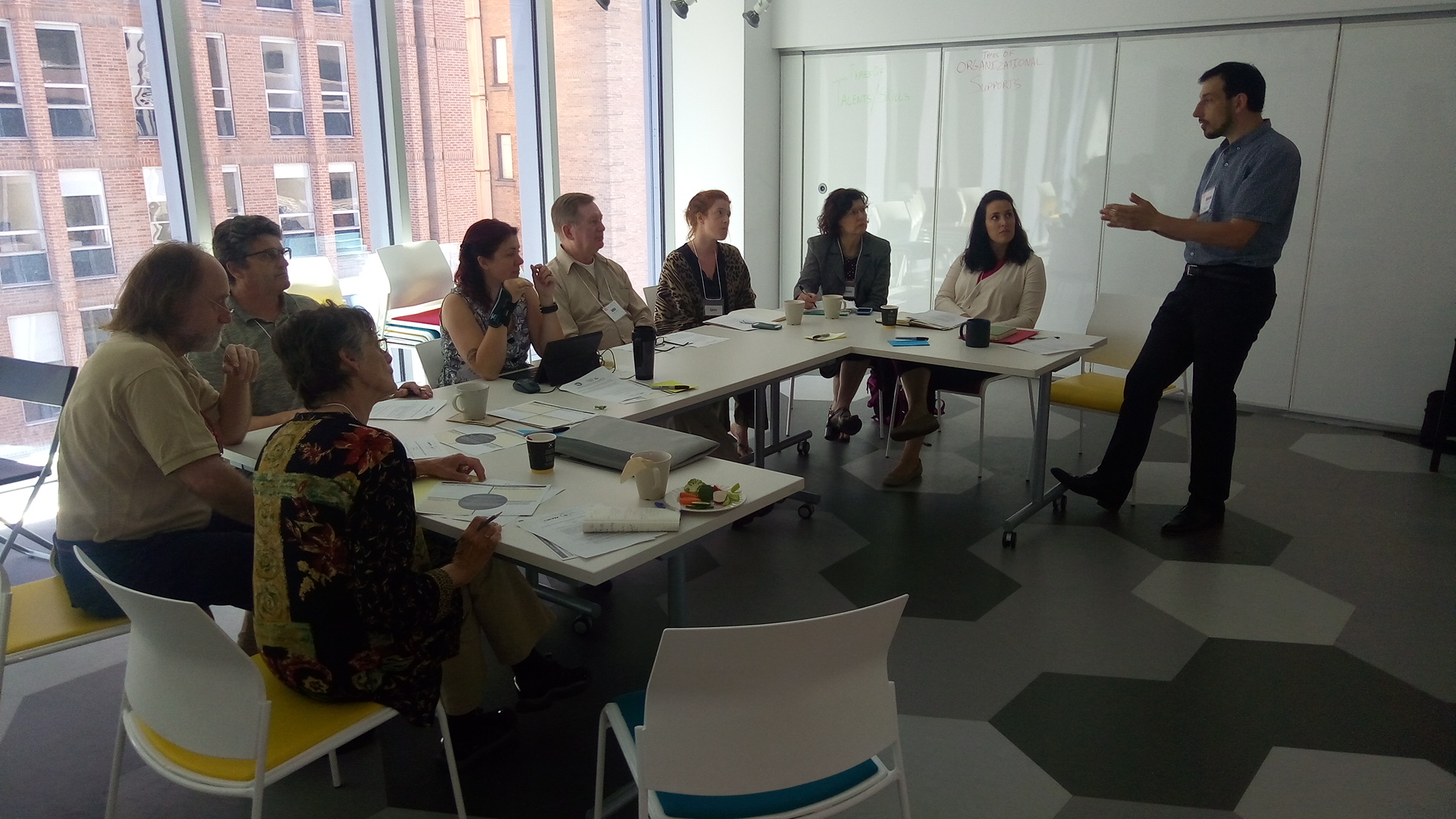by Kate Higginson, CFICE Communications Research Assistant
CFICE broadly defines being “community-first” as: “engaging in equitable partnerships to co-create knowledge and action plans for addressing pressing community issues.” For us, being community-first is an integral part of community-campus engagement (CCE), but the trick to really being community-first is defining what this looks like to all partners involved. Why? Because everyone has their own definition of “community”, and what it means to be “community-first.” These definitions can vary across the globe, depending on the culture, the individuals involved, and the type of work being completed.
We reached out to several CFICE partners, and Natasha Pei and Crystal Tremblay responded with their unique perspectives on what “community” means for them, and how they ensure they are being “community-first” in their work.
 Natasha Pei is the Manager of Eastern Cities for Tamarack Institute’s Vibrant Communities Canada. She worked within CFICE’s poverty-reduction hub as both a research assistant and community co-lead, and now operates within a network of 69 cities and community collaboratives that implement local poverty reduction strategies across Canada. Natasha strives to develop one-on-one relationships with local communities in order to hear their goals and challenges, and with their expertise, to develop personalized and group supports towards poverty reduction in Canada.
Natasha Pei is the Manager of Eastern Cities for Tamarack Institute’s Vibrant Communities Canada. She worked within CFICE’s poverty-reduction hub as both a research assistant and community co-lead, and now operates within a network of 69 cities and community collaboratives that implement local poverty reduction strategies across Canada. Natasha strives to develop one-on-one relationships with local communities in order to hear their goals and challenges, and with their expertise, to develop personalized and group supports towards poverty reduction in Canada.
 Crystal Tremblay is an assistant professor in the department of Geography at the University of Victoria. She is also a special advisor on community-engaged scholarships and is the Research Director with the UNESCO Chair in Community-based Research and Social Responsibility in Higher Education. Crystal is very experienced and has worked with many different communities. She did her PhD in Brazil while working with recycling cooperatives, and worked on with water governance programs for water and sanitation in Cape Town and Ghana for her Post-Doc. Crystal has also co-edited a book on community-campus partnerships around the world.
Crystal Tremblay is an assistant professor in the department of Geography at the University of Victoria. She is also a special advisor on community-engaged scholarships and is the Research Director with the UNESCO Chair in Community-based Research and Social Responsibility in Higher Education. Crystal is very experienced and has worked with many different communities. She did her PhD in Brazil while working with recycling cooperatives, and worked on with water governance programs for water and sanitation in Cape Town and Ghana for her Post-Doc. Crystal has also co-edited a book on community-campus partnerships around the world.
What does the term “community” mean in your work?
Natasha: We work with community in two contexts: local place-based community and communities of interest. The former comprises our Cities Reducing Poverty membership. Communities are geographic and their scope determined by local collaboratives coming together to reduce poverty. Communities are often synonymous with cities, but also include Regional Municipalities and a cluster of counties. They are multi-sectoral in nature and typically bring together influential nonprofit leaders, municipal and public staff, people with lived/living experience, and the private sector. Through each of their networks and through the collaborative’s activities, residents at-large in that area are engaged in planning and implementing poverty reduction work.
Community is also a term we use to describe our online network for people working or interested in poverty reduction. Because we work nationally, it is our responsibility to create a space where local communities can keep connected to one another throughout the year and learn together. We invite members and their partners to help co-host webinars, communities of practice, co-author publications, etc. It is a collaborative learning community where members are invited to co-generate knowledge as much as they consume.
Crystal: I consider “community” quite broad. Coming from the institutional perspective, I envision community as anyone external to the university when I’m speaking in a [community-campus engagement] CCE research context, so working with nonprofits, for profits, governments, society organizations, [and] first nations… Most of my work, personally, has mostly been with civil society organizations and government and then from some of my other perspectives of community, it’s people coming together to share a common vision and interests.
But then also thinking of community globally, it’s really hard to land on one way of thinking about community.
What does “community-first” engagement mean in your work?
Natasha: Community-first means developing a relationship with city/community leads, listening deeply to what they say their goals and challenges are, and adapting our network and supports to be useful to our members – delivering tailored supports when and how members need to receive them. Supports that are not used are not useful.
Crystal: It means putting community at the center of what we do. So really coming in thinking about how to work with community where they’re really at the center of what we’re doing throughout the [entire] research process… From thinking through what the research looks like [and] co creating the design together…Recognizing the different power [dynamics] between different actors, and making sure that community is the driving force behind decision making and funding decisions.
Do you have suggestions for how to be more community-first?
Crystal: When we’re working with community, [we need] to actually work in community and not always assume that everyone comes up to the university. When we’re organizing events, we want to have a lot of community there, we don’t just want academics. If we’re working with lots of different community organizations, [we can] support them by going to their place of work…Making sure that there’s always honorariums, that there’s food, [and] that you’re really acknowledging and valuing your community-partner’s time and knowledge in everything we do. And really thinking of how to support the agency of community as much as possible.
Being community-first can have positive impacts
CFICE has been working in community-campus partnerships for 6+ years now, and we’ve tried to embody a community-first ethos in our work. With this focus, we’ve managed to contribute to our CCE partnerships in ways that our community partners have found valuable. Below are some thoughts from our community partners on the benefits they have experienced in working with CFICE.
“[Working with Food Secure Canada has] been a great opportunity to build relationships with community organizations and academics across Canada and to hopefully have a real impact on the government’s policy-building process.” -Amanda Wilson, Community Co-lead, CCE Brokering Food Sovereignty Working Group
“Through the community projects in CFICE, and particularly in the Poverty Reduction hub, we’ve been able to…more intentionally leverage university resources and community resources and I think, in many ways, it’s also raised the profile of poverty in Canada that this work is going on.” -Liz Weaver, VP, Tamarack Institute, Poverty Reduction Hub
“CFICE has meant to me and my organization the opportunity to engage really deliberately and in a way that is more transparent with our academic partners to make sure that our partnerships are as sustainable and impactful as possible.” -Brianna Salmon, Executive Director of GreenUP, Community Environmental Sustainability (Pbto/Halib) Hub Partner
“CFICE has fostered a number of opportunities where the criteria [of project work] was very broad, and this lets a community decide what the initiatives should be.” -Cathy Wright, (Past) Executive Director, Living SJ, Poverty Reduction Hub Partner
“To me, CFICE means opportunity. It’s good to have an organization that supports this kind of research, community-based research. We can’t afford to have lots and lots of research that doesn’t touch peoples’ lives and that’s what CFICE is supporting – research that touches lives and makes change.” -Melissa Johnston, (past) MA candidate, CFICE Community Environmental Sustainability RA
What does being community-first mean to you?


